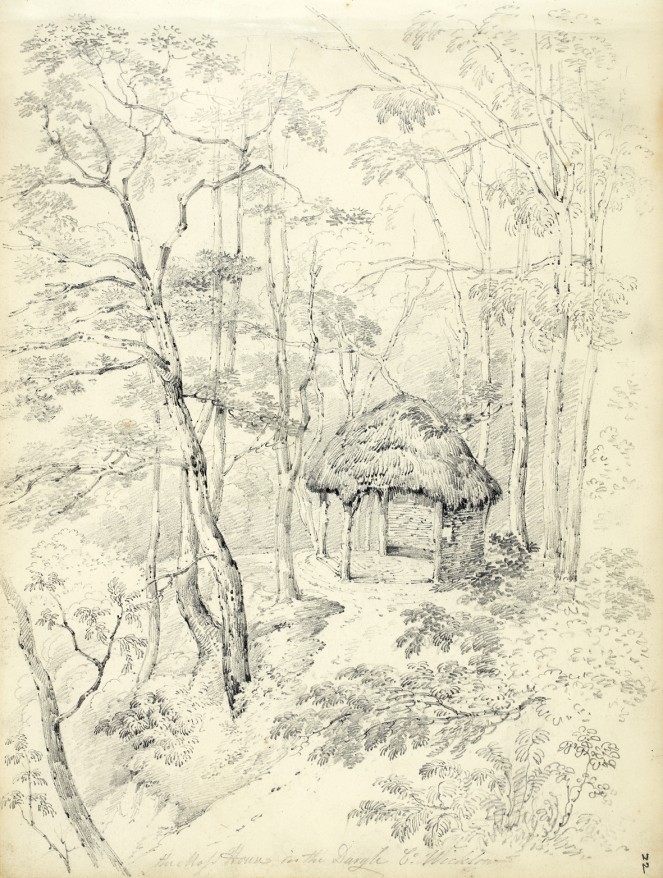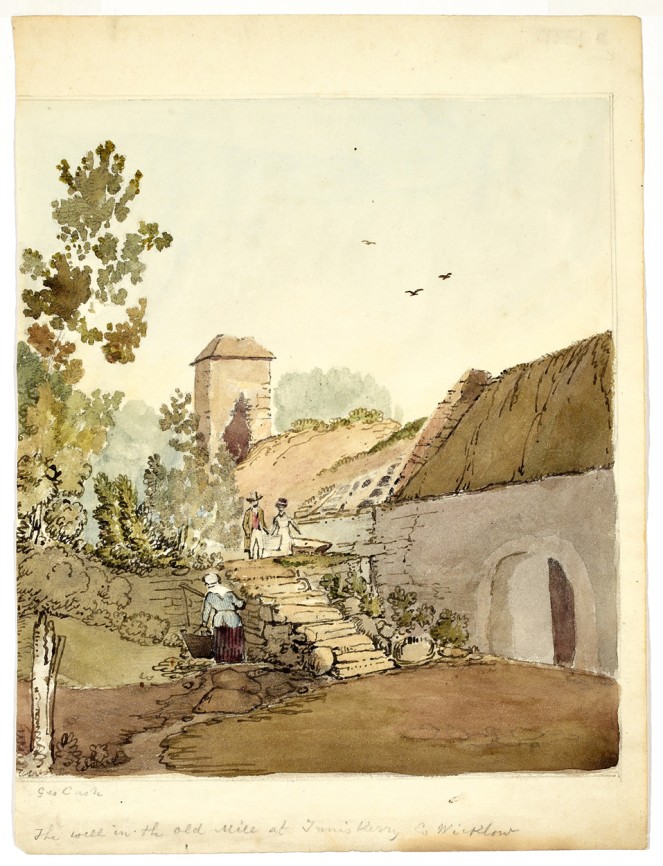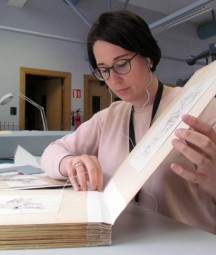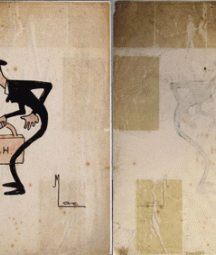by Michael Seery, NLI reader / chemistry lecturer / local historian extraordinaire
The problem with the Internet is that it’s really, just, very good. With a few keywords, I can easily compile several books from Google, a few useful blog posts and stack of journal articles that will keep the novice researcher in me busy. The problem – as I found out early on – is that while information is free and easy, it isn’t comprehensive. There might be a few Parliamentary Papers in a series, but others are not available. Books may be available but they can be a later edition to the one of interest. There are lots of pictures and sketches but many more aren’t digitised.

The well in the old mill at Inniskerry, Co. Wicklow by George Cash, ca. 1819. NLI call no.: ET 1839 TA
It was in an attempt to fill in some gaps while researching the development of the village of Enniskerry that I made my first appointment with the Prints and Drawings Department at the National Library of Ireland.
Prints and Drawings has an air of mystique, not least because you need an appointment to get in. Well-accustomed to the almost jovial main Reading Room and having braved the for-grown-ups-only Manuscripts Department, I felt I was ready for Prints. I’m not quite sure where it is in the Library building. The lift seems to go up a few floors, sideways for a while and then back down again, so it’s in that general direction. Arriving, you can’t but be struck by the airiness and serenity of what must be one of the most beautiful working spaces in Dublin – it is flooded with natural light. The walls are covered with drawers and the central area hosts a large table area for mounting prints.
My orders ready on a small desk, complete with white cotton gloves. I felt like Amanda Vickery, minus the iPad, or an extra on Who Do You Think You Are? The heroine of this particular set though is Honora Faul. She showed me through the few items I had requested and then let me work through them. When I was done, she had a casual conversation with me, and I mentioned some things I was interested in, albeit it in an unstructured way – bridges, development, Enniskerry – the kind of thing you’d punch into Google. Like lightning, there was an index book in front of me and faster than a Google search, drawers all around were being whizzed open and several beautiful prints and drawings were placed on the big table. From these, I could start to piece together the building of the bridge at Enniskerry village, from drawings by Alicia McCormick [PD 4063 TX] ca. 1820 and some beautiful sketches by Samuel Brocas [1999 (TX) 6; 1997 (TX) 8] both ca. 1822.

The well in the old mill at Inniskerry, Co. Wicklow by George Cash, ca. 1819. NLI call no.: ET 1839 TA
Even more exciting was that these sketches were themselves part of larger scrapbooks by the same artists which revealed many more sketches in the area of this time. For example Brocas sketched The Moss House in the Dargle, Co. Wicklow [1997 (TX) 22] and Grattan’s house at Tinnehinch [1997 (TX) 11], both of which were regular features in early 19th century travel narratives of the area but until this moment I had no idea what they looked like (or to be honest, even what a Moss House was!) All of these pre-dated the more commonly known views which were used in the mid-century travel literature, ca. 1840. A sense of the development of the village was evolving. Looking at my notebook now from this time, it is full of furiously scribbled notes after the calm work of my initial search. In less than an hour I had documented eleven beautiful sketches beyond my initial search; all of them full of detail useful to the local historian.
Honora disappeared again to answer an always-ringing phone or to work her magic with other researchers. As we finished up, she mentioned another subset of prints that might be worth trying for my next visit. A couple of weeks later, I got an email from her with some more leads and additional things she had thought of since my visit. Encouraged to visit again, I did, and came away with details of fifteen prints and drawings, including a personal favourite, The well in the old mill at Inniskerry, Co. Wicklow, a watercolour by George Cash [ET 1839 TA], ca. 1819. This can be cross-referenced to Brocas’ sketches of the bridge, which show a mill-race to one side – now long gone.
And so, the internet is always expanding, filling up with more and more information. Many of the images (but my no means all) have since been digitised. But what the online world will always lack is the expertise of a professional who is willing to share, suggest, discuss, and prompt. So move over Google; Honora is my search engine of choice for Prints and Drawings! Most of the images in the book I wrote would not be there if it wasn’t for her input. Leaving on my second visit, she mentioned, with a glint in her eye, that there was a whole series of Wicklow Ordnance survey maps being catalogued. I will be back!

